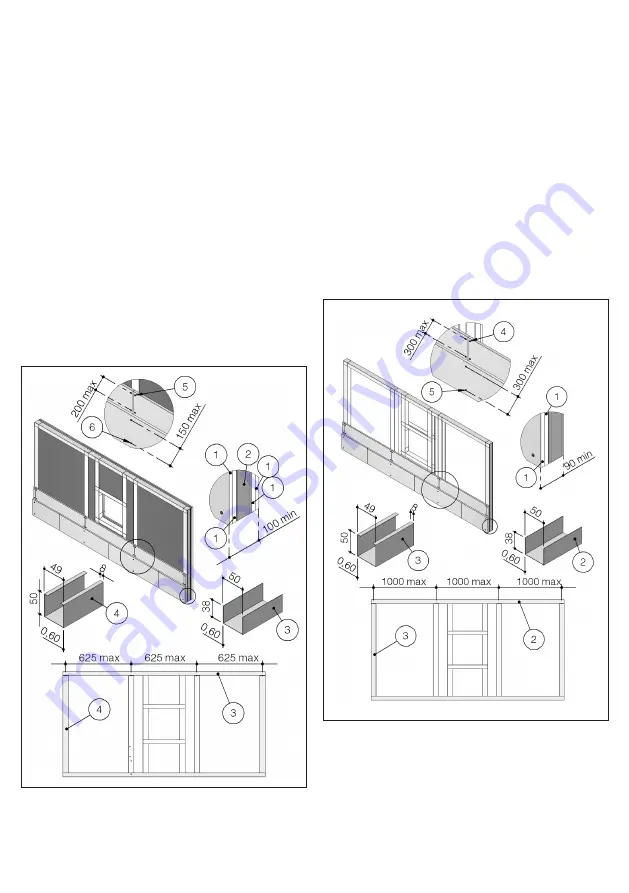
11
/15
• Vertical profiles placed with a maximum spacing of 625 mm be-
tween each other;
• Filling made of rock wool with density up to 100 kg/m³ (optional);
• Each side is made from two plasterboard layers 12,5 mm thick, un-
alinged to avoid alignment between the joints of the layer above
and below.
The following indications are given for the installation walls:
• metal profiles minimum width: 49 mm;
• metal profiles minimum thickness: 0,6 mm;
• vertical profiles placed with a maximum spacing of 625 mm be-
tween each other;
• vertical profile fixing with selfthreading screws or by clinching to
the bottom horizontal profile and insertion in the top horizontal
profile;
• profiles fixed using self-threading screws or by clinching on every
intersection.
• installation of a frame around the damper with base and height
where shown in the installation instructions;
• Filling made of rock wool with density up to 100 kg/m³ (optional);
• each side is made from two plasterboard layers 12,5 mm minu-
mum thick, unalinged to avoid alignment between the joints of
the layer above and below.
• the front plasterboards layers are fixed using long enough screws
to pass through the lower plasterboard and attach to the steel pro-
file underneath.
1. Plasterboard thickness 12,5 mm
2. Rock wool density up to 100 kg/m³ (optional)
3. Horizontal U-shaped profile
4. Vertical C-shaped profile
5. Self-drilling screw Ø 3,5 X 25 mm
6. Self-drilling screw Ø 3,5 X 35 mm
Light plasterboard vertical walls (Shaft wall)
The following indications are given for the installation walls:
• U-shaped horizontal metal frame (minimum width 50 mm) and
C-shaped vertical frame (minimum width 49 mm) made from
sheet metal (minimum thickness 0,6 mm);
• vertical profiles placed with a maximum spacing of 1000 mm be-
tween each other;
• vertical profile fixing with selfthreading screws or by clinching to
the bottom horizontal profile and insertion in the top horizontal
profile;
• profiles fixed using self-threading screws or by clinching on every
intersection.
• installation of a frame around the damper with base and height
where shown in the installation instructions;
• one side is made from two plasterboard layers 20 mm minumum
thick, unalinged to avoid alignment between the joints of the layer
above and below;
• the front plasterboards layers are fixed using long enough screws
to pass through the lower plasterboard and attach to the steel pro-
file underneath.
1. Plasterboard thickness 20 mm
2. Horizontal U-shaped profile
3. Vertical C-shaped profile
4. Self-drilling screw Ø 3,5 X 35 mm
5. Self-drilling screw Ø 3,5 X 55 mm

















